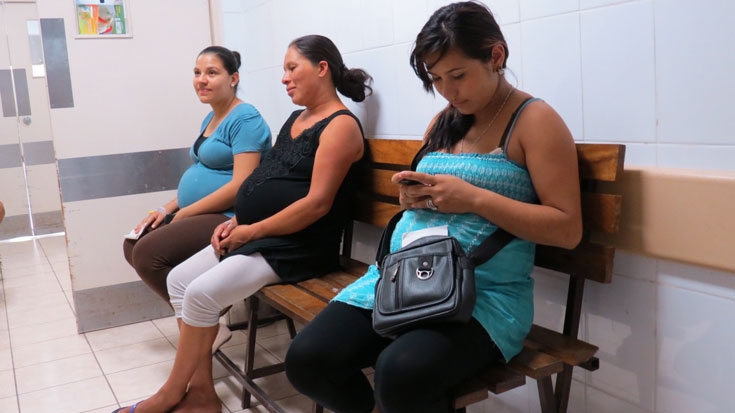Challenge
In 2001, two earthquakes destroyed 194,000 homes and killed 1,260 inhabitants. Altogether, 113 of the 361 Ministry of Health facilities were affected, which removed from service more than 2,000 hospital beds and reduced the hospitals’ capacity by 25 percent. In addition, the country’s core public health functions had limited capacity and constrained managerial resources. Finally, despite progress in controlling communicable diseases, the country faced vector-borne diseases and maternal and child health challenges.
Solution
The project’s goal was to re-build the capacity of the hospital networks to deliver quality services in the areas affected by the earthquakes. It also sought to improve health equity in utilization and financing of health services. The project addressed these issues of inadequate health services coverage in the poorest and most remote areas through service delivery contracts with nongovernmental organizations (NGOs).
The project supported two health service delivery models. The first model contracted with NGOs for basic services and the second model established health units within the Ministry of Health. Once under way, the project and the Ministry of Health moved rapidly to prepare and implement contracts with NGOs and strengthen the primary health care units. This strong commitment ensured full sustainability of component activities. The project financed an Information Unit in the Ministry and established a monitoring and evaluation unit for a dozen priority programs. Subsequently, data were collected, policy options were examined, and project management was improved. Investments supported by the project were helpful in consolidating the extended health coverage within the Ministry to address inequitable access and disparities in health outcomes. The NGO contracts and mobile teams from established health units responded to the health needs from the poorest population, especially from rural and remote areas. The Ministry substantially improved its capacity in human resource management, information systems, regulatory norms, and protocols. It also upgraded its ability to address to deal with vector-transmitted diseases, solid waste disposal, and similar issues.
Results
The project’s supported improvements related to several key outcomes:
Health services were extended to 1.23 million women, children, poor and indigenous people in the 141 poorest municipalities—an increase of 353 percent over the original target.
- By 2010, 79.6 percent of women had at least five pre-natal checkups, and obtained tetanus vaccinations and iron supplements.
- By 2010, 93.1 percent of children under one had at least five appointments to promote growth.
- Between 2007 and 2011, coverage increased to 86.2 percent of children under two vaccinated. DPT (diphtheria, pertussis, and tetanus) vaccinations for children under two years of age increased by 20 percent
- The Ministry of Health strengthened its programs and community awareness for vector-transmitted diseases (dengue and malaria). This included (i) investments in logistical and administrative activities in the central, regional, and local levels, (ii) surveillance vehicles, (iii) equipment for the dengue and malaria programs, (iv) technical guides for field teams, (v) computers and other equipment to the local and central offices, training and other activities on prevention, (v) inspectors in the dengue and malaria programs, (vi) fumigation equipment, and (vii) books and other written materials on dengue cases.
- Three new hospitals were constructed, and three were rehabilitated. All six hospitals were provided with training and were equipped with new technology, such as integrated information systems, information technology equipment, and software.
- Goals for solid waste management and disposal in at least seven hospitals and seven health care units were surpassed, as were those for treating medical waste in public health facilities. The project promoted the development of new regulations and supported approval of a national policy.
Bank Group Contribution
The project’s investment in the construction and rehabilitation of the six hospitals totaled US$127 million. The project also provided US$80 million for activities that supported the national health strategy and technical assistance in procurement and preparation of technical documents. In addition, the project allocated US$16.5 million to expand the coverage of essential health and nutrition services in impoverished rural areas, through public-private partnerships. These activities included capitation payments to providers to finance the cost of an essential health package. Finally, the project supported malaria and dengue interventions and information systems, for a total of US$16 million.
Partners
The Ministry led the coordination among development partners in El Salvador. The project coordination unit coordinated the activities. Analytical work and expenditures reviews were conducted in coordination with the Pan-American Health Organization and the Inter-American Development Bank.
Moving Forward
By project closing, the legal and normative frameworks were approved and implemented, including the Health Law and Decentralization Law. The project contributed to the development of the recently adopted Comprehensive Primary Health Care Strategy, with the Coverage Extension Program as one of its key features. The project also supported the establishment of the Coverage Extension Unit (Unidad de Extensión de Cobertura). The dengue and malaria activities funded by the project set the conditions for the expansion of the fight against these diseases, and the strengthening of the health information system. Six hospital networks became functional in the provision of services to the population in the area covered by the project.
Beneficiaries
The project ensured the provision of quality services at the hospital level to approximately 3 million people. It also provided health services to 1.2 million people in the poorest and most remote areas of the country, which were receiving inadequate services or no services at all before project implementation.


